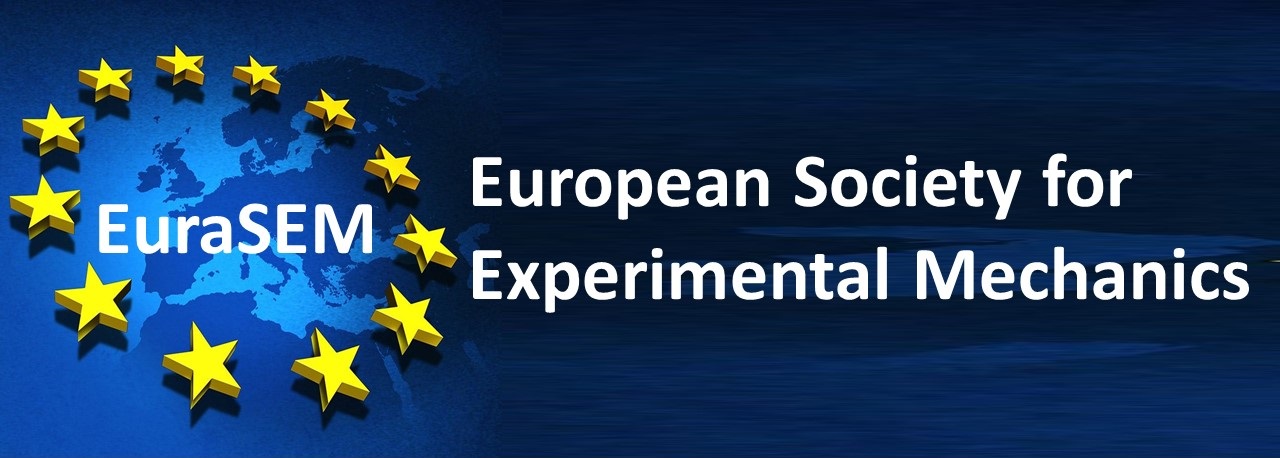EuraSEM's Mission
Experimental Mechanics always played a crucial role in all stages of a material’s or structure’s life cycle from research and design to production and use until liquidation and/or recycling and it always will. Therefore, it is the society’s firm ambition to bring together students and international experts from academia, governmental institutions and industry to meet, interact and to actively promote research, development and education of all experimental methods. The society wants to provide a world-wide forum for, discussion, exchange of new ideas, the establishment of new friendships and collaborations and for the dissemination of recent acquired knowledge in an area of utmost scientific and technological importance.
EuraSEM's history .. in a nutshell
The European Society for Experimental Mechanics (EuraSEM), continues along the lines of the European Association for Experimental Mechanics (EURASEM), originally founded in 1959 and whose name has been adopted in 1998. From the first conference, which took place in Delft, The Netherlands in April, 1959, EURASEM served the European Experimental Mechanics community by organising the well established ICEM series in Europe. In July 2007, the Permanent Committee of EURASEM agreed to create a new society based on the previous organisation and composed of individuals to organise and strengthen the European Experimental Community. It has been decided to proceed to the dissolution of EURASEM at the Permanent Committee Meeting of March 2008 and to propose a new Constitution to launch a new organisation called EuraSEM. EuraSEM is a new organisation, building on the past and preparing for the future, therefore EuraSEM wishes to acknowledge the important role of those who laid the foundations of EURASEM and worked for the achievement of its objectives.
Governance
The General Assembly (GA) is the highest governing body of the society. The general meeting, chaired by the president, contains all members of the society and convenes every two years in conjunction with an ICEM-conference. An extraordinary GA may also be called in special circumstances further detailed in the constitution. The GA’s main task is the election of the council members and the supervision of the activities of the Council and the Executive committee. Key activities of the Society since the last ordinary GA and future projects shall be reported by the President or the Secretary. The financial report of the past year and the provisional budget shall be reported by the Treasurer. The General Assembly shall give its agreement to each report independently by a vote, all individual members have one vote each. According to the constitution the GA has the sole authority to change the statutes and, to approve and change the bylaws. All decisions of the General Assembly shall be taken by simple majority of the members voting unless otherwise specified in the Constitution and By-Laws. In the event of a tie, the President shall cast the deciding vote.
The council, containing 21 members, is mandated by the GA to implement the decisions of the GA, to audit the activities of all the committees of the Society, and to ensure that officers, committees and organization mechanisms are in place for the Society to meet its main objectives. The council elects the President; the two Vice-Presidents; the Secretary and the Treasurer. Other key duties and responsibilities of the council are (i) the organization of the GA; (ii) approval of new statutes, or amendments to old ones, where necessary, before final approval by the General Assembly; (iii) to receive and agree on reports from the Executive Committee; (iv) to receive proposals, especially from the Technical Committees, for new strategies, and if agreed, to put in place the mechanism for achieving these strategies; (v) to set the level of subscriptions, based upon the advice of the Treasurer and to determine the financial policy of the Society and finally (vi) to establish the awards committee and to agree upon the venues of future EuraSEM-ICEM conferences/meetings. The Council shall meet at least once every year, preferably in combination with either an ICEM Conference, a EuraSEM sponsored conference or a TC (Technical Committee) meeting.
The president, the two Vice-Presidents, the Secretary and the Treasurer make up the Executive Committee (EC). The EC is responsible for the daily implementation of strategic directions and policies decided/approved by the council and for establishing and maintaining good governance practices.
The secretariat (Ann Herminaire) provides administrative and organizational support to governmental bodies. The secretariat coordinates all communication activities, provides support to members of the society, prepares meetings of the General Assembly, the council and the Executive Committee and is the single point of contact for all external queries.
